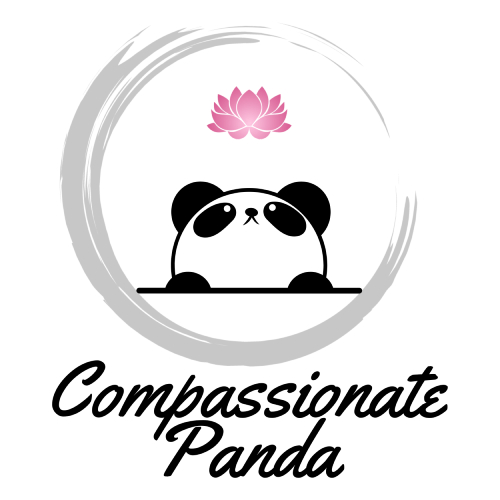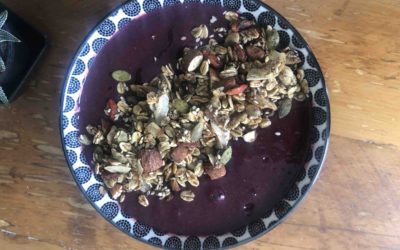Global food trends are changing rapidly
With plant-based eating styles gaining in popularity, I am often asked what I eat by those who know I follow a 100% plant-based (vegan-friendly) diet, mostly because they are interested in doing so themselves.
At first, I used to be really specific, but now I choose to share the overarching concepts instead. I’ve found this is easier for people to remember and, perhaps more importantly, helps highlight more of the ‘big picture’ elements from a nutritional perspective. The rest is up to each person’s tastes and imagination.
How do you eat plant-based? Start by picturing a bowl
When all your foods are coming from plants, it can be easier to think more along the idea of ‘eating from a bowl’ than from a traditional plate. This not only helps you think about all the one-pot delicious meals you can create but also gets you thinking about macronutrients rather than specific food items.
Much the same as an omnivorous diet, a balanced plant-based diet needs to incorporate sources of carbohydrates, proteins, fats, fibre and micronutrients – namely the vitamins, minerals and phytonutrients (e.g. antioxidants).
How to assess the quality of your plant-based meal
When planning your ‘bowl’ — ask yourself the following…
1. Have I included lots of colourful wholefoods? (colour = antioxidants)
- Think about how you are ‘eating the rainbow’ all through the day and choose to eat purple, red, orange, yellow, green and the ‘healthy’ white wholefoods (e.g. cauliflower, mushrooms, fennel, nuts).
- I opt to buy as many colourful varieties of vegetables as possible, based on availability (think orange, yellow, red and green capsicum; yellow, red, orange and stripy heirloom tomatoes; purple and orange carrots; white and purple cabbage, etc.).
- There are many different mushrooms and if you can get them, choose shiitake if possible – these mushrooms, in particular, contain polysaccharides that can help support healthy immune function.
- Don’t forget to include a range of fruits – most people can add fruit to their meals as long as their digestion is fine. If you prefer not to, that’s fine too; it can become a stand-alone colourful nutrient-rich healthy snack instead.
2. Where is my fibre coming from?
- Wholegrains, legumes, nuts and seeds are the main ones I’m thinking of. But, remember — all vegetables and fruits contain some sort of fibre as it forms part of the structure they are made of.
- Where possible, leave the skins on and eat as much of the stalky bits that you can, too. If you have to chew it a bit, it’s probably fibre!
3. Do I need any fats?
- These are less essential, but I like to include wholefood sources of fats such as avocado, olives, nuts/seeds and sometimes coconut meat.
- I minimise the use of liquid oils as these are an unnecessarily calorie-dense plant extract that most people really do not need. Whilst they are handy for some culinary creations, I see what I can do without them – using oils is more of a habit in cooking, than a need. That said, if I do use an oil, I only use cold-pressed extra virgin olive oil or unrefined coconut oil.
4. What offers protein building blocks (the amino acids)?
- This is not my first thought despite seemingly everyone asking me where my protein comes from! (Have you ever considered where a gorilla, elephant or rhinoceros gets their protein from? They all eat only plant foods and are usually pretty muscular and strong creatures!)
- Fortunately, a well-thought-out plant-based diet will have plenty of nutrients, including protein. That said, it’s still something to be mindful of (as are all the nutrients), so to answer that need I opt to regularly include foods such as tempeh (and some tofu), other legumes and pulses, quinoa, nuts and seeds.
- Did you know, even the humble apple has a tiny bit of protein? It all adds up.
- On top of that, I choose to keep a vegan-friendly protein powder at home. Whilst I don’t use this daily, if you want to go completely plant-based then it can be a handy addition for creating smoothies when you are looking to add a bit of extra protein for your day, maybe because you are doing some strength training, or just to make your smoothie a bit more substantial (protein and fibre help keep you full for longer). The way I see it is, you don’t need to use such things as protein powders as you can always base your choices on wholefoods, but I find it helpful to have around.
Aim to eat 20 different food items in a day for variety
On that note; nutritional diversity in my daily diet is a personal goal (meaning, I eat as many different food items as possible in a day). As such, I extend this aim to my choice of protein powder and opt for one that has a variety of plant protein sources in it (mine is from multiple grains) rather than just one, and choose one where the grains have been sprouted if possible (which makes them more digestible). I also opt for an unflavoured one, as I prefer to add my own fruit, nut butter, cacao (or whatever else I fancy) to my smoothies.
I also avoid any sweetening agents (many contain stevia, which is always listed as ‘natural’ but is heavily processed and unnecessary in my opinion).
So, that’s the big macro items taken care of. Now let’s look at some of the finer details.
Eating a plant-based diet needs some attention to detail
Let’s start with where you get your calcium
This is available from a variety of plant sources including green leafy vegetables (which should be eaten daily in quantity anyway for all their nutritional goodness!). However, I choose to also use calcium-fortified plant milk (maybe not every day but most days). There are plenty about and currently, I opt for Oatly (in the blue carton), but you will need to check the labels of other brands to see what they offer.
Keep it as simple as possible is my recommendation – the fewer the ingredients the better other than anything specific you are seeking (in this case it’s some extra calcium for me). Also, tofu is typically set with calcium carbonate, so that adds to my total daily calcium intake too. Even if it’s not the most bioavailable source of this mineral, doesn’t mean you cannot use it at all — if your digestion is otherwise good then this is an option.
Calcium alone is not enough—send your bones the right signals to stay strong
As women get older and oestrogen levels fall, we become more vulnerable to bone loss – hence why I ensure there are bone-supporting minerals such as calcium in my diet and will continue to do so. But I also make sure I am doing regular resistance training for both my upper and lower body. This is a really important part of the calcium conversation, but not one that’s often discussed.
You see, your body is constantly dismantling and rebuilding its cells and tissues – and these need to be receiving internal signals that, for example, your muscles are being used and therefore need to maintain their mass. Those same types of signals trigger bone-building processes so you maintain bone mass (or even increase it), but there needs to be load-bearing occurring on the skeleton for this to happen.
Ever heard the expression “use it or lose it”?
You need to apply this concept to how your body understands what it needs to be doing. Walk, lift weights, use resistance bands, carry heavy shopping, use your body weight in training and yoga (e.g. including inversions). By regularly loading up your different body structures, their tissues and cells will have to respond to remain strong. Keep sitting about, taking the elevator and driving everywhere and your muscles will lose mass, and your bones will suffer the consequences of inactivity, regardless of any calcium intakes.
Specific vitamins and minerals to pay attention to when eating a plant-based diet
- Iodine: eat sea vegetables regularly — you don’t need much iodine, but you need to be mindful of this when you cut all animal products from your diet.
- B12: get an annual blood test that includes this (and serum iron, ferritin [iron stores] and vitamin D3) as it’s easy to keep an eye on these nutrients, even if this is only in a basic way. Like it or not, B12 is something that needs to be supplemented if you are following a plant-based diet. You will read that some foods are fortified (e.g. nutritional yeast), but these levels are typically unreliable.
Some supplements are better than others – I opt for a methylcobalamin source of B12 personally and ensure I am also getting plenty (and I mean plenty!) of folate (vitamin B9) in the form of methylfolate as I was dealt some slightly compromised gene variants and I feel better with this combo. We are all different so you need to check this out for yourself. Just know that B12 and B9 do need to be considered together as taking one can ‘mask’ an insufficiency in the other if you are not really paying attention to your dietary intake of greens (which contain folate) and have good digestion all the way through from start to finish (which impacts B12).
Note: B12 comes in synthetic versions now so check for a vegan-friendly option should this be something you prefer.
- Vitamin D3: this is a ‘sunshine’ vitamin (actually it’s more like a hormone), so we do get some from being outdoors but, again, you can have levels checked in your blood before supplementing. It’s not that uncommon to see lower than optimal levels. If you are vegan, you need to check your D3 is from plant-based sources and vegan-friendly, or opt for a D2 supplement if you find you need to raise your levels. This is because some D3 is obtained from the lanolin in sheep’s wool.
- Omega-3 fatty acids: when eating a plant-based diet, the easiest way to get some omega-3s is to add a big spoon of ground flaxseed to your daily smoothies. Omega-3 is also found in chia seeds and in small amounts in a variety of other foods including quinoa (but only flaxseed really has a good dose). That said, there are now some good algal-based vegan omega-3 supplements if eating flaxseed every day is not your thing.
Are your oils healthy choices? Be careful
When thinking omega-3 – it is worth understanding that much of what is discussed about these is the omega-3:6 ratio. The best way to improve this ratio is to decrease or completely remove plant oils from the diet – these provide omega-6 and can be heavily processed. Indeed, some are highly refined and arguably very toxic oils.
Food marketers would have you believe that sunflower and canola oils are good for you (and there is some evidence which says this is so…but of the natural product). Unfortunately, by the time the plant seed oils are extracted using heat to maximise yield (which oxidises the oils), then refined and put into a clear plastic bottle and on the supermarket shelf…I can assure you these are not something you want to put in your body.
Give plant-based eating a go!
My goal was to share a quick overview of how to eat rather than what to eat from a big-picture perspective. We are all different, but once you get the concepts then you can adapt your diet to your preferences, though I encourage you to keep trying new foods in new ways to diversify your diet.
What’s more, do keep in mind which nutritional elements may be lower or absent from a modern plant-based diet. The solution is to understand what these are and plan accordingly. Fortunately, we no longer need to eat animal-based products and there are easy solutions to keep you well whilst you navigate this way of eating should you feel drawn to do so for your health, ethical or environmental reasons.
Enjoy!
Featured image by Anna Pelzer on Unsplash




